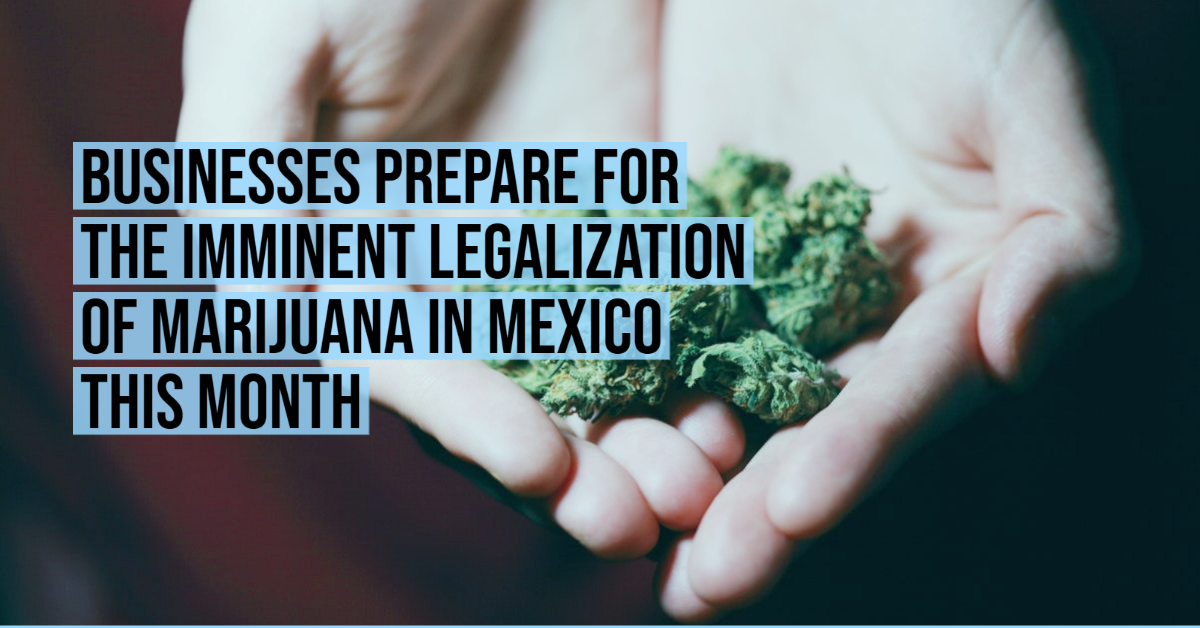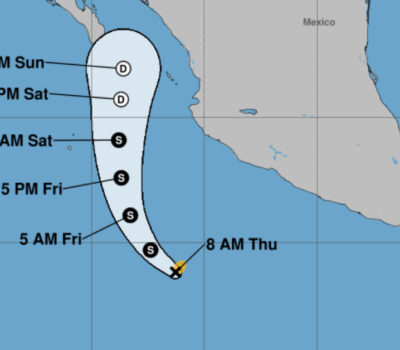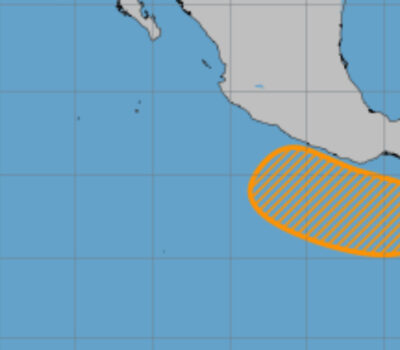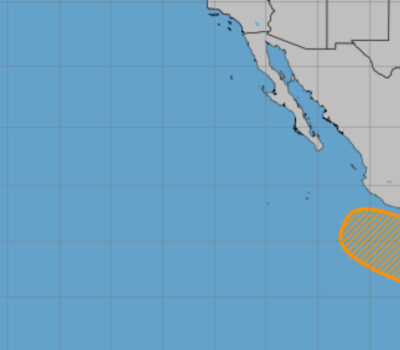The Mexican industry is preparing for the imminent legalization this month of all uses of marijuana in the Senate, which has until April 30 to regulate cannabis by mandate of the Supreme Court of Justice of the Nation (SCJN).
The full Senate will vote on the bill approved in March by the Chamber of Deputies that creates the Federal Law for the Regulation of Cannabis and reforms the General Health Law and the Federal Criminal Code, making Mexico the third country in the world to legalize marijuana, after Uruguay and Canada.
“The economic potential is enormous, we are talking about generating more than $22 billion dollars in less than four years because there is an opening to all areas, from the medicinal part, the recreational part, and even the industry”, explains Lorena Beltrán, businesswoman of the Latin American Cannabis Alliance (Alcann).
The bill moving through the Senate includes licenses for the cultivation, transformation, commercialization, points of sale, and research of cannabis, explains Beltrán.
The National Commission against Addictions (Conadic) will monitor the consumption and industrial use, the Ministry of Agriculture and Rural Development (Sader) the cultivation, and the Federal Commission for Protection Against Health Risks (Cofepris) the safety of the products.
A year and a half after the law was published, Mexicans could see the first legal cannabis stores, predicts Alfredo Neme, representative of the National Cannabis Council (CCN), which groups small and medium-sized companies (SMEs) interested.
“In about 18 months we could already be seeing legal dispensaries and all this panorama that has been raised, such as national crops and seed registration,” he said.
If the current bill is passed without new changes in the Senate, the new legislation allows the permitted individual possession of up to 28 grams of marijuana, the cultivation of up to eight plants at home, and permits to grow industrial hemp.
But the reforms still include fines for possessing between 28 and 200 grams and prison sentences of up to 15 years for carrying more than 200 grams.
In addition, the deputies rejected the first Senate proposal to create an Institute for the Regulation and Control of Cannabis, by opting to give more attributions to Conadic, still treating consumers as “addicts”.
The Lower House did not accept the suggestion of implementing minimum quotas for small farmers and indigenous peoples, in addition to prohibiting the import and export of end products of psychoactive cannabis.
“It lacks a lot, many issues were pending and the Senators themselves know it, but at the end of the day we celebrate that we have a major advance in the law and the possibility of beginning to improve it,” commented the representative of the National Cannabis Council.
Despite the shortcomings, businessmen agree on the history of the new legislation, which by 2028 opens a national cannabis market with a value of two billion dollars, with 67% from the medical branch and 33% recreational, according to a report by Endeavor Mexico, an association that encourages entrepreneurship.
Endeavor estimates that there are about 500,000 people involved in cannabis in Mexico, considered the second-largest producer in the world with up to 27,000 tons a year, based on data from the UN and the US Drug Enforcement Agency (DEA).
“There is a lot of interest in the approval of the Federal Law for the Regulation of Cannabis. The entire industry is looking at Mexico, which could become the largest market in the world,” anticipates David Berezowsky, a lawyer for the firm Foley Arena.
One of the main advantages of Mexico is that 80% of the territory is suitable for growing cannabis and its derivatives, according to Alcann.
“Industrial hemp specifically is very easy to cultivate. It is the non-psychoactive cannabis plant, therefore, as it does not represent a health risk, it will be easily accessible both to cultivate and to commercialize”, comments Beltrán.
Entrepreneurs agree that marijuana will be one of Mexico’s main solutions to the economic crisis derived from COVID-19.
“What is coming to Mexico is unimaginable, in addition to the tourist impact that we are going to have. So this is a great opportunity wherever we see it,” concludes Beltrán.
What will be allowed with the legalization of marijuana in Mexico?
- It will allow people of legal age to consume psychoactive cannabis as long as they do not do so in front of a minor or any other person who does not consent
- The sale of cannabis and its derivatives for adult use in the country will be allowed, although this must be done in authorized establishments
- A person living alone can have up to six marijuana plants in their home, while if there are two or more users in the same household, the number increases to eight.
- For cultivation, transformation, commercialization, export or import, licenses must be processed
- A person may have more than one type of licenses and none of them implies any activity with the medicinal use of cannabis
- The person who wants to smoke it at home must carry out the necessary remodeling so that the smoke is not inhaled by people other than consumers (i.e. if your neighbor complains about the smell of your smoking, you can face a fine)
- A person may have only 28 grams (one ounce) of marijuana
- If a person has more than 28 grams, they will be entitled to a fine of $5 thousand to $10,500 pesos
- If the person has more than 200 grams, they could go to prison
- Cannabis recreational consumption clubs may be created with a minimum of two members and a maximum of 20
The Mexican industry is preparing for the imminent legalization this month of all uses of marijuana in the Senate, which has until April 30 . . .












